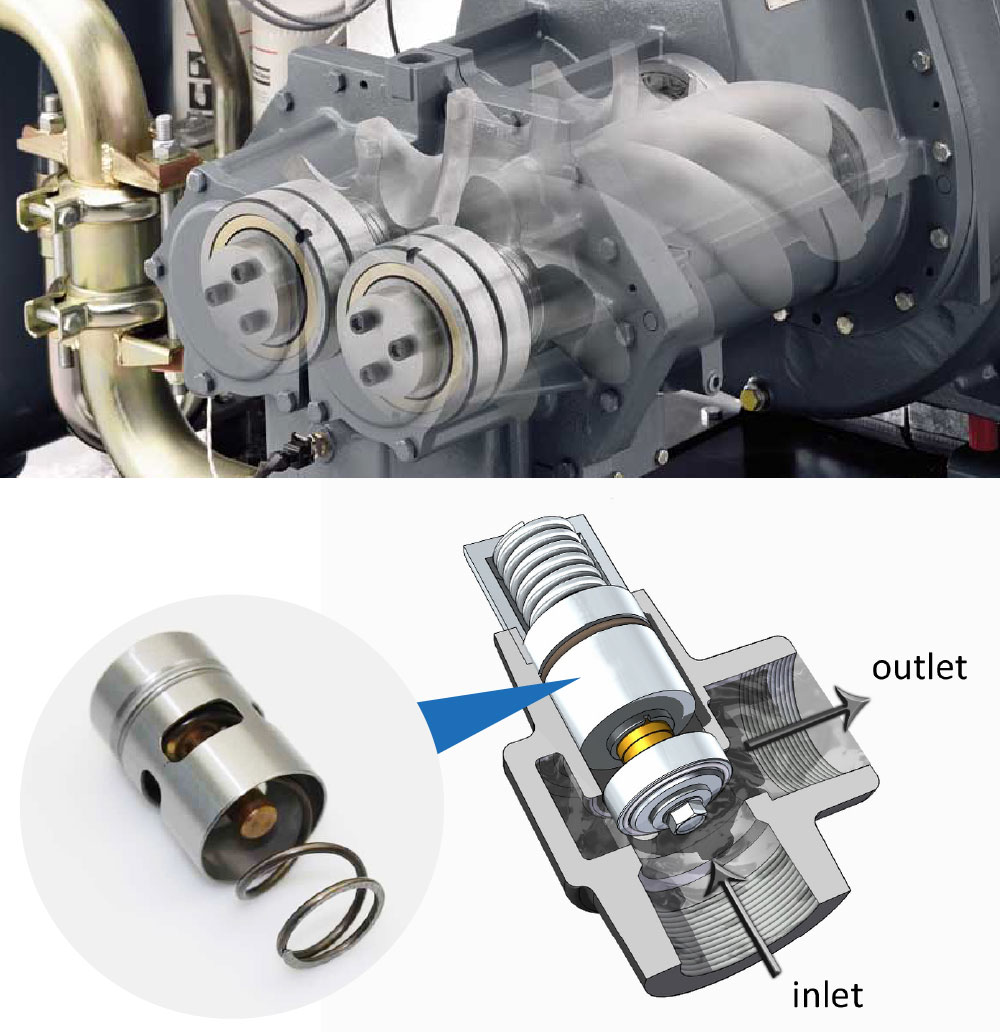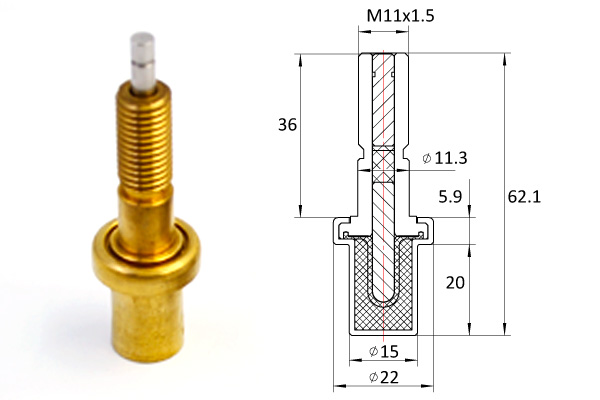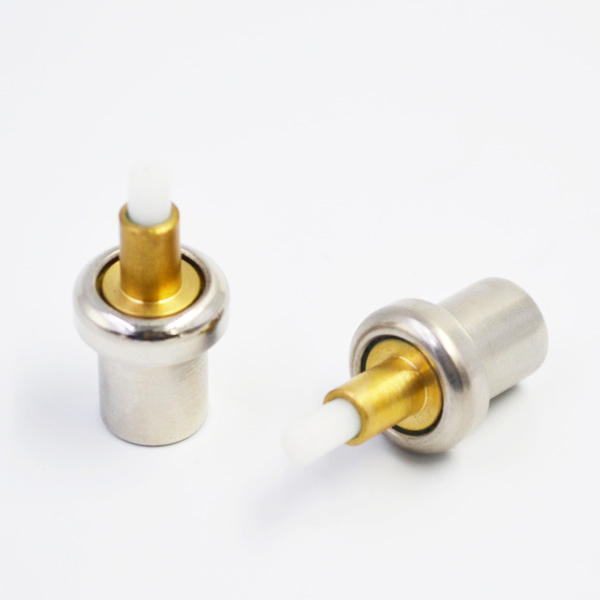The IGBT module, DC-DC module, motor control module, vehicle controller and key electrical parts of the electric vehicle power control system are all integrated in the same shell by adopting integrated design scheme. IGBT module and DC/DC module are the heating parts of power control system. The steady and transient analysis of IGBT module and DC/DC module power devices are carried out respectively by using CFD finite element thermal simulation analysis software.

The cooling and heat dissipation effect inside the integrated shell is verified, which is conducive to the determination of heat dissipation design scheme. At present, motor controllers, DC/DC converters and air conditioning compressor controllers are usually integrated into power control unit (PCU) in foreign electric vehicles. Some enterprises and research institutes integrate high-voltage distribution system and low-voltage power supply controller into PCU, and implement high-voltage electrical safety control strategy and low-voltage electrical safety control strategy. Voltage supply interlocking control strategy [1].

Most domestic electric vehicles do not adopt integrated design, but install different functional components in different positions of the vehicle, and then connect each component through the relevant harness. Because of the difference of vehicle type, driving device and mode, power source, the space size and structure layout of engine compartment are changed. For different models, different devices need to be designed, which not only increases the design cost, but also is not conducive to large-scale production, platform sharing and promotion of products [2]. Therefore, it is necessary to integrate the motor control module, vehicle controller module (VCU), high voltage distribution module, IGBT (Insulated Gate Bipolar Transistor) module and DC/DC converter module into one device, which is highly integrated, compatible with multi-vehicle installation and improves the components. The service life of the parts is good in economy, low in cost and convenient in maintenance, thermostatic element which makes the automobile more competitive. Among them, IGBT module has many advantages, such as high input impedance, low driving current, large safe working area, fast switching speed and low switching loss. It has been widely used in the field of electric drive vehicles. If the IGBT module is designed and used improperly, it will be damaged. The most important factor is the high wafer temperature. Therefore, in the integrated design of power control system, the thermal design of IGBT module is particularly important [3]. The power controller shell of electric vehicle is divided into three parts: PCU top cover, PCU main body and PCU bottom cover. The main body of PCU shell integrates vehicle controller module, motor controller module, DC/DC module and high voltage distribution module. Among them, motor controller module and vehicle controller module are the core.
Vehicle controller controls air conditioning system, sensing system, ABS brake system, insulation monitoring system and charging system, which play a vital role in vehicle safety. Therefore, in order to avoid all kinds of interference from high-voltage distribution module and DC/DC module, the internal structure of the shell should be divided into warehouses and zones. As a protective device in circuit circuit circuit, the damage of high voltage distribution module is common. It should be stored separately for easy maintenance and replacement. DC-DC module, as a heating element, should also be set up separately. The main body of the shell is divided into two layers (as shown in Figure 1). From the front of the car, the upper layer is divided into motor controller storehouse and high voltage distribution storehouse on both sides, and the lower layer is DC/DC converter storehouse. Because IGBT module and DC-DC module require high working environment, they will produce high heat in the work. In order to ensure the normal use of components and prolong the service life as far as possible, water cooling method is adopted to reduce the heat emitted by the two modules.

A waterway is built in the main body of PCU shell. Considering the requirement of overall design size, IGBT module and DC-DC module share the same waterway, and the waterway is placed in the middle of them [5]. The overall arrangement is shown in Figure 2. As can be seen from Figure 2, the upper left end of the controller shell is equipped with vehicle controller and motor control board, followed by driver board, IGBT module and DC-DC module from top to bottom. The common cooling water circuit is located between IGBT module and DC-DC module. The failure modes of IGBT modules usually include overcurrent, overvoltage, avalanche breakdown and beyond the safe working area, but the fundamental reason is that the wafer temperature is too high. Overheating of IGBT module will produce thermal stress, which will lead to the separation of internal binding line from wafer or wafer from DCB layer, which will lead to the failure of IGBT module. In order to acquire the heat dissipation performance data of power control system, experimental measurement and computer aided modeling and simulation calculation can be adopted. In this paper, computer-aided modeling and simulation calculation are used. According to the relevant theory of fluid mechanics, practical problems are transformed into mathematical and physical problems. Mathematical models are established. Thermal simulation analysis is carried out by using numerical simulation software CFD [6]. In thermal simulation, the model is simplified as follows: the other redundant devices are removed, and only the main parts of IGBT module, DC/DC module power device and water-cooled radiator are retained. The models of IGBT module and DC/DC module are shown in figs. 3 and 4, respectively. IGBT module cooling water inlet and outlet adopt two nozzles, front and rear horizontal parallel arrangement. The pin on the copper substrate of IGBT module acts as a channel to realize heat exchange. The pin model of the copper substrate is shown in Fig. 5. The inlet water temperature should be lower than 55 C and the flow rate should be 0.000 2 m3/s. Considering two special cases of flow rate of 0.000 1 m3/s and 0.000 3 m3/s, the temperature difference between the outlet and the inlet should not be more than 3 C.

Die-cast aluminium water-cooled radiator with ADC12 material and 96.2 W/(mK) thermal conductivity is adopted. When the heat loss is rated, the heat loss of IGBT module is mostly between 800 W and 900 W, where 850 W is taken as the simulation value. The maximum allowable junction temperature of IGBT module is 175 C, and the maximum allowable temperature of radiator surface (IGBT power module) is 112 C. The total heat loss of DC/DC module power devices is 67 W. The heat loss of power tubes is distributed in P1, P2 and P3, which is 20 W, 13 W and 27 W in turn. The heat loss of other devices is 7 W [8]. The rated flow rate of intake is 0.0002 m3/s and the heat loss is rated. The simulation results are shown in Table 1. The maximum temperature of IGBT module is 65.5 C, and that of power device P3 transistor on DC/DC module is 68.8 C. As shown in figure 6, it meets the thermal design requirements. The average temperature difference between import and export is 1.1 C, and the average pressure difference between import and export is about 1.
6 kPa. After 30 seconds, the simulation results show that the maximum temperature of IGBT power module is 77.5 C and that of power device P3 transistor on DC/DC module is 71.7 C, which meets the thermal design requirements as shown in figs. 7 and 8. The average temperature difference between import and export is 2.7 C, and the average pressure difference between import and export is about 1.6 kPa. The intake flow rate is considered as the low limit value of 0.0001 m3/s, and the heat loss is rated. The steady-state thermal simulation is carried out. The simulation results show that the maximum temperature of IGBT module is 68.6 C, and that of power device P3 transistor on DC/DC module is 71.9 C, which meets the thermal design requirements as shown in Figure 9. The average temperature difference between import and export is 2.18 C, and the average pressure difference between import and export is 0.40 kPa. The inlet flow rate is set to 0.0001 m3/s, and the heat loss is changed to overload condition (based on rated condition calculation). After 30 seconds, the simulation results are shown in Table 4. The highest temperature of IGBT module is 826 C, and the highest temperature of power device P3 transistor on DC/DC module is 75.4 C. As shown in figs.
10 and 11, it meets the thermal design requirements. The average temperature difference between import and export is about 5.2 C, and the average pressure difference between import and export is about 0.40 kPa. Under extreme conditions, the temperature rise of the device is within the allowable range, but the temperature difference between the inlet and outlet is greater than 3 C. At this time, the temperature of the working environment and the duration of overload should be taken into account, and the system should be designed to avoid working under this condition as far as possible. The intake flow is changed to a high limit of 0.0003 m3/s, and the heat loss is rated. The steady-state thermal simulation is carried out. The simulation results are shown in Table 5. The highest temperature of IGBT module is 64.1 C, and the highest temperature of power device P3 transistor on DC/DC module is 67.4 C, which meets the thermal design requirements. The average temperature difference between import and export is 0.7 C, and the average pressure difference between import and export is 3.6 kPa. The motor control module, vehicle controller module, high voltage distribution module, IGBT module and DC/DC module in the power control system of electric vehicle are integrated into a shell by adopting integrated design scheme. This highly integrated design is not only suitable for a variety of models, but also can improve the service life of components, facilitate maintenance, low cost, and make the car more competitive. Through CFD simulation software FloEFD 9.0, steady and transient analysis of IGBT module and DC/DC module of power control system are carried out respectively. When the inlet flow rate is set to 0.0001, 0.0002 and 0.
0003 m3/s, the maximum temperature of IGBT module and the maximum temperature of power device P3 tube on DC/DC module all meet the requirements of thermal design, and the average import and export are achieved. The temperature difference and average pressure difference meet the design requirements. The thermal simulation results validate the cooling and heat dissipation effect of the integrated shell of power control system effectively, which is conducive to the determination of heat dissipation design scheme, further shorten the design and development cycle, and save the design and development cost.
